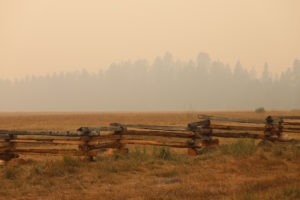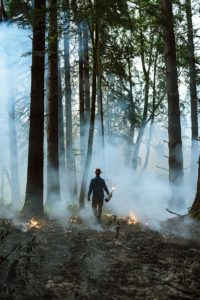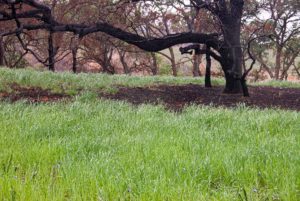Organizations
The California Fire Safe Council (CFSC) fosters the creation of local and county Fire Safe councils; they provide information and resources to help protect communities from wildfires. The CFSC also maintains a comprehensive website (www.firesafecouncil.org) that serves as a clearinghouse for fire prevention education materials for homeowners and local Fire Safe councils. The information below is just a sampling of the exhaustive resources the CFSC and other organizations have to offer.
Bay Area Fire Safe Councils
Diablo FireSafe Council (Contra Costa County) www.diablofiresafe.org
FIRESafe Marin www.firesafemarin.org
FIRE SAFE, San Mateo County www.smcfiresafe.org
Santa Clara County FireSafe Council www.sccfiresafe.org
Fire Safe Sonoma County, Orinda Fire Safe Committee, Mount Veeder Fire Safe Council (Napa County), and Santa Cruz County Fire Safe Council www.firesafecouncil.org
Association for Fire Ecology (AFE) www.fireecology.net
AFE is a California-based organization that promotes the understanding and use of fire in land management in the West. AFE includes two sections: California Association for Fire Ecology (CAFE) www.ice.ucdavis.edu/cafe and Student Association for Fire Ecology (SAFE) (www.fireecology.net/Safe/webB), with chapters at UC Berkeley and UC Davis.
Books, Brochures, and Literature
Kent, Douglas. Firescaping: Creating Fire-Resistant Landscapes, Gardens, and Properties in California’s Diverse Environments. Wilderness Press, 2005. A comprehensive, new hands-on guide to fireproofing your home turf that includes tips and resources on fire-resistant landscaping and construction, including lists of fire resistant plants tailored to the myriad climates of California.
Pyne, Stephen J. Tending Fire: Coping with America’s Wildland Fires, Island Press, 2004. Former “hotshot” firefighter Pyne examines the historic and contemporary relationship between fire and humanity and the controversy between the “let burn” and “control burn” camps.
Hunter, Captain Geoffrey. Oakland Fire Department, California (Images of America). Arcadia Publishing SC, 2005. Backtracking some 150 years, Captain Hunter’s tribute to Oakland’s volunteer engine hook and ladder companies, heroes that fought fire with leather and brass hoses, as well as the social strides of racial integration and, in time, women firefighters.
After the Vision Fire: Report of the Phoenix Team of the Environmental Action Committee of West Marin (www.nps.gov/pore/fire_visionfire.htm). Also known as the Phoenix Report, this 91-page publication gives an overview and chronology of the Vision Fire, as well as the Phoenix Team’s recommendations on home design, fire-resistant structures, restoration, fire hazard management, defensible space, and reference/resource lists.
Leonard Tennyson’s First-Hand Accounts of the Mount Vision Fire (www.nps.gov/pore/fire_visionfire.htm) includes interviews of everyone in every profession touched by the Point Vision fire: rancher, firefighter, park ranger, fire strategist, fire warden, water district manager, inmate firefighters, naturalist, an observer, burned-out home owners, and those home-owners spared by the fire.
The CFSC has several resources for homeowners, including Homeowners Checklist and Fire Safe Landscaping (www.firesafecouncil.org/education/index.cfm).
Putting Wildfires in Perspective (www.californiachaparral.com/images/WildForests.org_fire_pamphlet.pdf) is a brochure that tackles several issues, including the relationship between logging and wildfires, and the ways in which forests, wildlife, and fisheries can benefit from wildfires.
For those in the field of wildland and urban-interface fire management, Wildfire Magazine (www.wildfiremag.org), the official magazine of the International Association of Wildland Fire, covers wildland fire issues on the local, state, federal, and international level.
Making a Home for Homeless Wildlife in Aftermath of California Fires (www.cnpssd.org) (Look under After the Fire link) is an informative brochure from the National Wildlife Federation. Suggestions include providing sources of clean water, and planting native plants in your garden to provide natural food and shelter for wildlife that has been chased from its habitat by wildfire.
Marin’s firefighting agencies worked together to produce People, Parks, & Fire: Building Partnerships in the Wildlife-Urban Interface (www.nps.gov/pore/fire_pp&f.htm), a fire safety supplement that lists Marin’s wildfire history, explains how to design a defensible space surrounding your home, and shows how you can reduce fuel loads, among other topics.
Native American and Fire
USDA Forest Service historical analyst Gerald W. Williams’ References on the American Indian Use of Fire in Ecosystems (www.wildlandfire.com/docs/biblio_indianfire.htm) brings together a wealth of works under the idea that supposed “natural fires” might instead have been caused intentionally by Native Americans.
In the early 1900s, anthropologist and UC Berkeley professor A.L. Kroeber recorded the Pohonichi Miwok myth, The Spell of Fire, as written in his “Indian Myths of South Central California” based on interviews with Yokut Indians, where Coyote outwits Turtle to bring fire to the Pohonichi Miwoks. This and several more Miwok myths have been converted to HTML by Dan Anderson and are available at www.yosemite.ca.us/history/pohonichi_miwok_myths/#page_202
Bibliographies
Some Fire and Post-Fire Reseeding References
www.cnpssd.org/fire/firereseeding-reference.pdf
A list of references on fire and reseeding compiled by the San Diego Chapter of the California Native Plant Society.
InterfaceSouth www.interfacesouth.org/resources/literature.html
Though located on the East Coast, this searchable literature database organized by the USDA Forest Service’s will connect you to journal abstracts on wildland fire (just select “Fire” and click “go».”
Annotated Bibliography for Fire Ecology in California
www.ice.ucdavis.edu/cafe/tab_info_biblio.html
A searchable bibliography that canvasses electronic databases, scientific literature, and other sources.
Selected Fire References Related to the Sierra Nevada
www.nps.gov/seki/fire/fire_bib.htm
The Sequoia and Kings Canyon National Parks have built this “Fire Information Cache” for the southern Sierra. This bibliography is organized into “general literature/information,” “technical and scientific literature,” and “historic and background literature.” Several references are available as pdfs.
Websites
Point Reyes National Seashore: Vision Fire
www.nps.gov/pore/fire_visionfire.htm
This National Park Service website specific to the Vision Fire includes historical incident reports and publications, as well as the excellent retrospective post-fire research publication “Vision Fire: Lessons Learned from the October 1995 Fire.” The site also features several photo series, including one on the Vision Fire, and post-fire interviews with firefighters and local residents (viewable as downloadable pdf documents). (www.nps.gov/pore/fire/firephoto_vf.htm).
Fire-Threatened Communities in California
www.cafirealliance.org/communities_at_risk.php
The California Fire Alliance, a cooperative group of public agencies, has compiled a list 1,283 communities in California at greatest risk from wildfire.
Firewise www.firewise.org
Serving both homeowners and firefighters, Firewise offers resource materials ranging from information on fire-proofing your home to fire safe landscaping to a new video series, “Firefighter Safety in the Wildland/Urban Interface.”
Fire Effects Information System (FEIS) Database
A searchable database on how fire affects specific plant and animal species.
Fire Safe-“Inside and Out”
www.firesafecouncil.org/education/insideout/firesafebig.html
This CFSC educational website covers a breadth of fire-safety issues, including how to develop and maintain a fire-safe landscape around your home, how to build or remodel your home to be fire safe, and what to do when you are threatened by a wildfire.
Natural History of Fire & Flood Cycles
www.coastal.ca.gov/fire/ucsbfire.html
On August 18, 1995, Jack Ainsworth and Troy Alan Doss gave a presentation on the natural history of fires and floods to the Post-Fire Hazard Assessment Planning and Mitigation Workshop at the University of California, Santa Barbara. The presentation is reprinted courtesy of the California Coastal Commission.
Is a Wildfire Headed Your Way? Stay Informed Online, in Real-Time: The USGS and other partnering agencies have produced an internet-based mapping application that gives wildfire personnel and the general public access to online maps of current fire locations and perimeters using standard Web browsers. The GeoMAC Web site, http://geomac.usgs.gov/, allows users to manipulate map information displays, perform searches and zoom in and out to display fire information at various scales and levels of detail. Users can display information on individual fires, such as the name of the fire, current acreage and other fire status information, with just the click of a mouse. For more information on the GeoMAC tool, contact Heidi Koontz at (303) 202-4763 or hkoontz@usgs.gov.
Fire Safe Garden
At UC Berkeley’s Richmond Field Station, the Fire-Safe Garden and Fire-Safe Demonstration Facility simulate a home at the wildland/urban interface. Includes a garden planted with fire-resistant plant species and a miniature “house” showing examples of both fire-safe and hazardous design elements. More information at http://nature.berkeley.edu/~fbeall/FireMit/garden.html or (510) 231-5613.
Events
October is Fire Safety Month. Events include Fire Prevention Week from October 2 to 8, and the Marin County Fire Prevention Officers are sponsoring their annual Fire and Life Safety Fair on October 8 in Corte Madera. (415) 927-5077.
Wildfire Awareness Week (WAW)
Every year in May, the CFSC and the California Department of Forestry and Fire Protection sponsor a Wildfire Awareness Week public education and media campaign. More information can be found at www.firesafecouncil.org/media/waw.cfm




